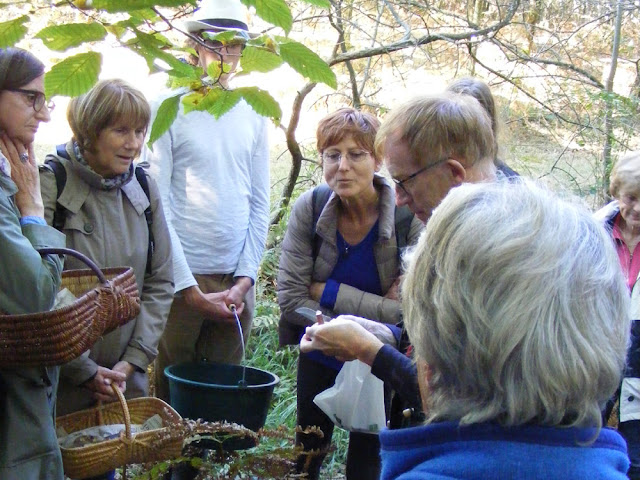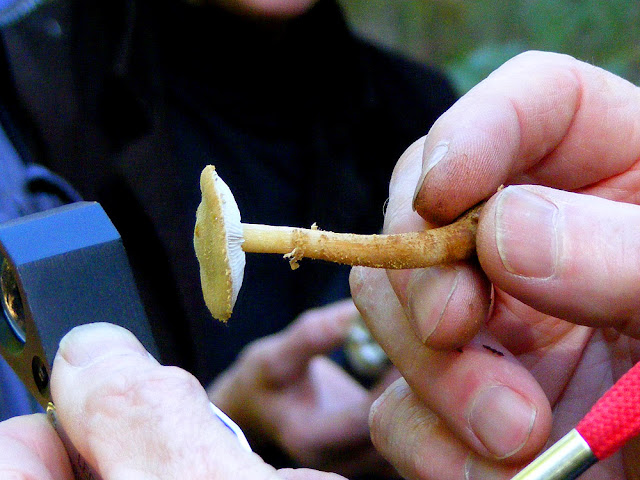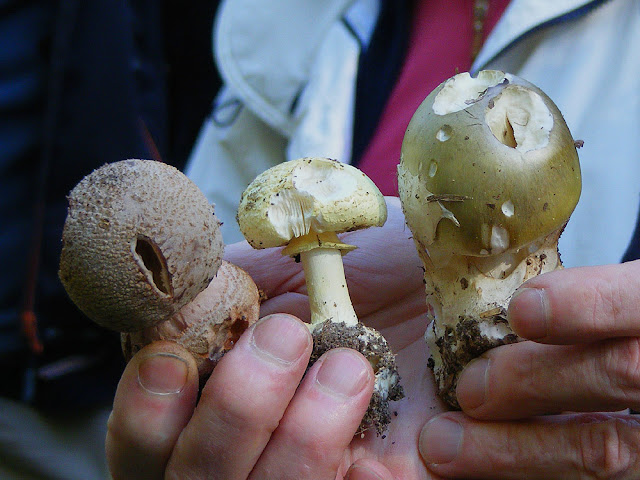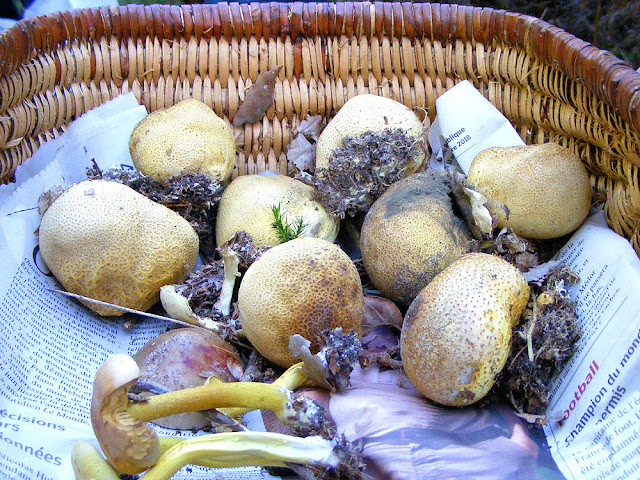Here are some photos from the fungi outing organised by the Association de botanique et de mycologie de Sainte Maure de Touraine [link] and led by expert pharmacist Didier Raas.
 |
Didier talking about how to distinguish the edible species of Parasol mushroom Macrolepiota procera (Fr. Coulemelle). His advice is to only eat Lepiotes if they are greater than 10cm in diameter and have ‘zebra’ stripes on the stem. All small Lepiotes are toxic, as are some of the big ones.
|
 |
This kid was vastly amused to get to puff stinky brown spores out of a Common Earthball Scleroderma citrinum (Fr. Scléroderme commun).
|
 |
Didier talking about the veil still attached under the cap of this Scaly Wood Mushroom Agaricus sylvaticus (Fr. Agaric des bois). It has no volva (sack) at the base of the stem, the gills are not white (and will turn from pink to brown) so you know it is not an Amanita spp, several of which are deadly.
|
 |
Didier identifying a mushroom, watched closely by people keen to learn how to safely forage for mushrooms.
|
 |
Yellowdrop Milkcap Lactarius chrysorrheus (Fr. Lactaire à lait jaunissant), identifiable because scraping the gills produces yellow 'milk'.
|
 |
| Amethyst Deceiver Laccaria amethystina (Fr. Laccaire améthyste). Not all mushrooms with violet coloured caps are the same species, as some learners on the outing appeared to believe. If they are small they are L. amethystina, an edible species. It has been dry, so these ones are particularly small.
|
 |
Looking at the scales on the cap of Earthy Powdercap Cystoderma amianthinum (Fr. Cystoderme furfuracé).
|
 |
A selection of Amanita spp. From left to right, Blusher A. rubescens (Fr. Amanite rougissante), False Deathcap A. citrina (Fr. Amanite citrine), Death Cap A. phalloides (Fr. Amanite phalloïdes). Didier reminded everyone to dig up whole mushroom, especially those with white gills, in order to have all the features necessary for an accurate identification. Two of these mushrooms could be eaten, but have toxic lookalikes, one is deadly.
|
 |
Sulphur Knight Tricholoma sulphureum (Fr. Tricholome soufré). Toxic. Smells of coal gas (Fr. gaz d'éclairage).
|
 |
Common Earthballs Scleroderma citrinum (Fr. Scléroderme commun).
|
 |
An array of Amanita and Tricholoma spp. From left to right, Death Cap, False Death Cap x 4, Blusher, White Knight T. album (Fr. Tricholome blanc), Sulphur Knight. Toxic, non-toxic, edible, toxic, toxic.
|












No comments:
Post a Comment